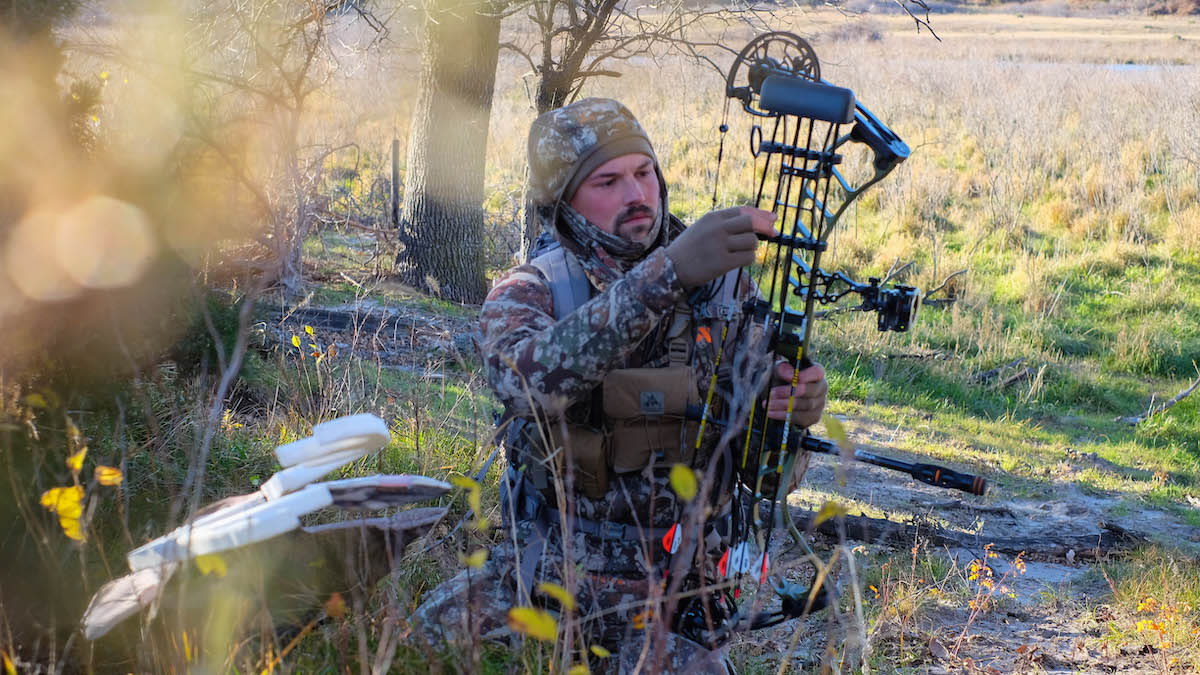
When it comes to the heart of the whitetail season, there is one thing that must always be true. If the timing and conditions are right, you need to be in the woods.
Whether it’s rain, wind, snow, or bitter temperatures, if you want to consistently fill those whitetail tags you’ve got to be able to persist through the elements. But developing the right system to get you through those conditions is not always an easy task. To help make your decision-making process a little easier, here’s a breakdown of exactly what I wear from First Lite during these key phases of the whitetail season and why.
My Mid-Season Kit
When I say mid-season, I’m referring to the Super Bowl of the fall. The best weeks of the year typically fall in late October and roll right on through the month of November. During this part of the season, I’m usually hunting somewhere across the upper Midwest or Great Plains where temperatures can swing wildly, snow is a possibility at any point, and winds are sure to blow eventually. I need a system that can handle an arctic blast but also be versatile enough to still be usable during those dreaded warm spells.
The first step to any whitetail kit is your next-to-skin layer, and for me, that means a Wick Long-Sleeve Shirt on top. This merino wool base layer is naturally antibacterial, meaning it doesn’t get stinky, and it wicks moisture. Above that goes my Origin Hoody, a piece I wear the entire season through. This mid-level fleece piece has a built-in facemask, stretchy hood, and just enough warmth to even act as an outer layer into the upper 50s.
Once the temps get down into the 40s, I’ll add the Solitude Jacket as my final outer layer, which is windproof, filled with 100 grams of synthetic insulation, and is designed with smart pockets for whitetail applications. I’ll wear this set-up down into the 30s, but if I want to push it even colder, I can add the Source Jacket as a second mid-layer, which is First Lite’s new silent and packable puffy jacket.
On the bottom, I keep things pretty simple with the Furnace Long Johns, a heavier wool piece to keep me dry and warm with the Solitude Bibs on top. These are windproof and insulated well enough to comfortably take you down into the upper 20s and 30s with just that single base layer. If you needed to go colder, you could do so with a second pair of long johns.
With the above system, I add and remove parts based on temperature so I can hunt from the upper 50s right on down into the 20s and colder. Honestly, this is my recommended set-up for most die-hard deer hunters across the country. Whether you’re in Tennessee or Michigan, Pennsylvania, or Nebraska, this should cover pretty much all the weather you could expect in most seasons. Anything more is probably not needed.
My Late-Season Kit
That said, if you hunt in the far north and expect especially long stretches of extreme cold, you might want to bump up to a more late-season-focused system. When the temperatures get into the single digits or below, I reach for my Sanctuary System. This is First Lite’s most insulated and bomber outerwear for whitetail hunters. Fully windproof and with 200g of synthetic insulation through the body, this jacket and bib system is the outer armor for my late-season system and something I’ve tested all the way down to 30 degrees below zero plus windchill.
Other than this new outer layer, the rest of my system stays basically the same. I’m still wearing Furnace Long Johns on the bottom with the heftier Sanctuary Bibs. On top, I start with the Wick Crew but will add a Furnace Top as well. Next is the Origin Hoody, the Source Jacket, and then finally the Sanctuary Jacket.
If you hunt in Canada or spend a lot of late-season days on stand in the northernmost United States, this might be a system worth considering.
Final Thoughts
Are these the right systems for everyone? Likely not. Do you need it all? No. Folks do kill bucks in blue jeans every year.
That said, this is the system that works best for me. I’ve tested this gear from Maine to Michigan, Alabama to Arkansas, and many points in between. And I’ve found it to be a kit that keeps me comfortable and capable in the woods for the long hours and days I spend in the field when it matters most. It’s truly the best system I’ve used to date and a set of gear that I trust entirely.
That said, there is a lot there, so if you find yourself in a position to only start with a few pieces, my top three items would be the following: the Origin Hoody, the Solitude Jacket, and the Solitude Bibs. This trifecta can form a foundation that you can build off of over the years, while still enjoying some great hunts right away.





Conversation